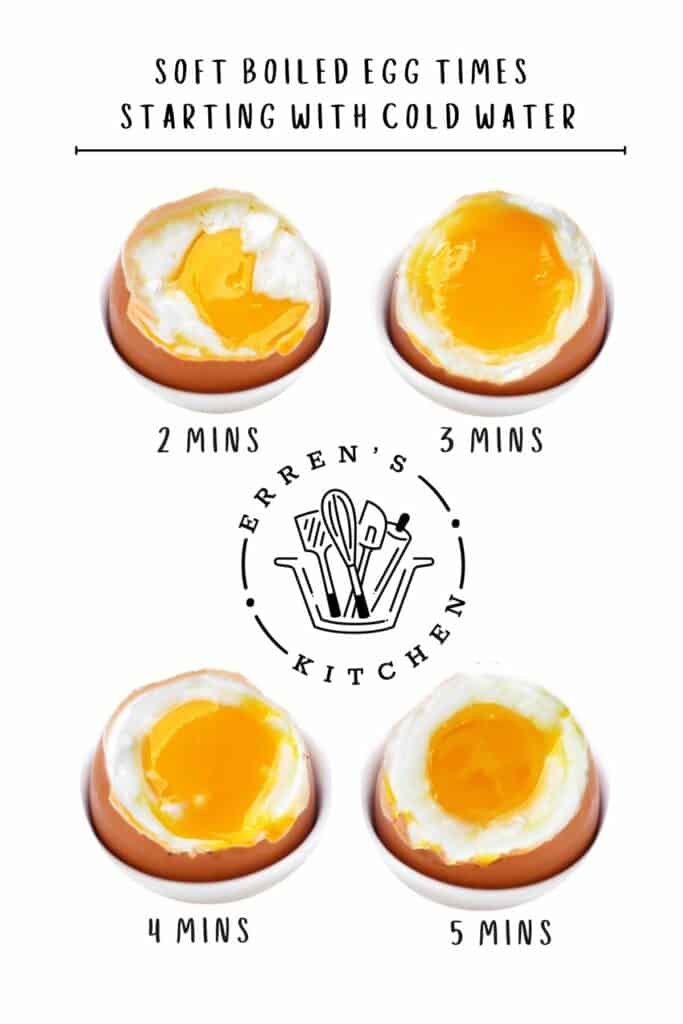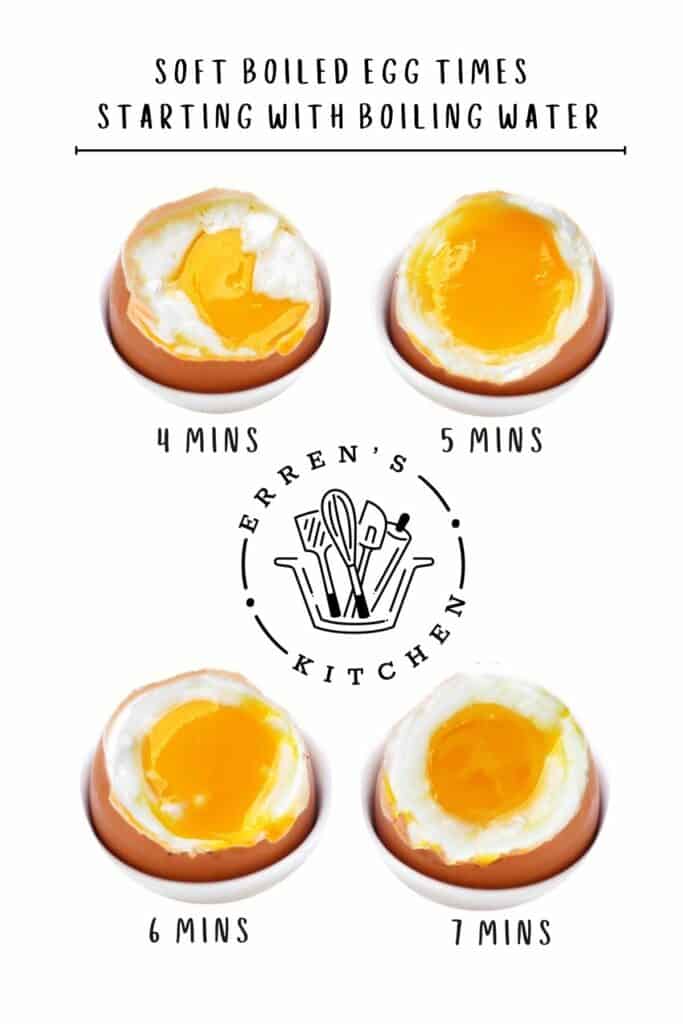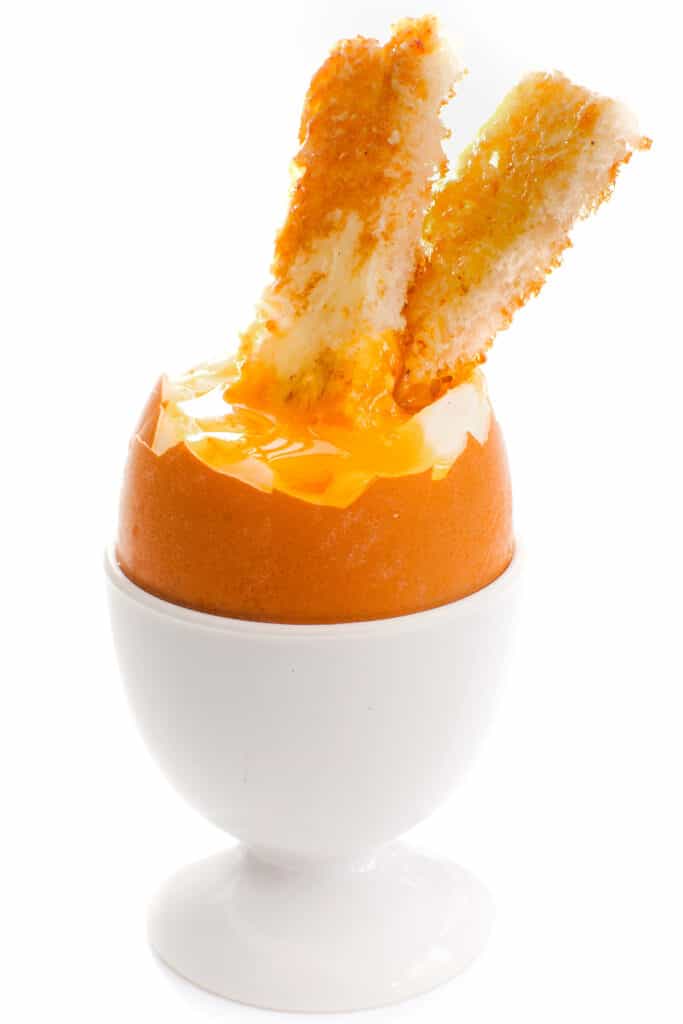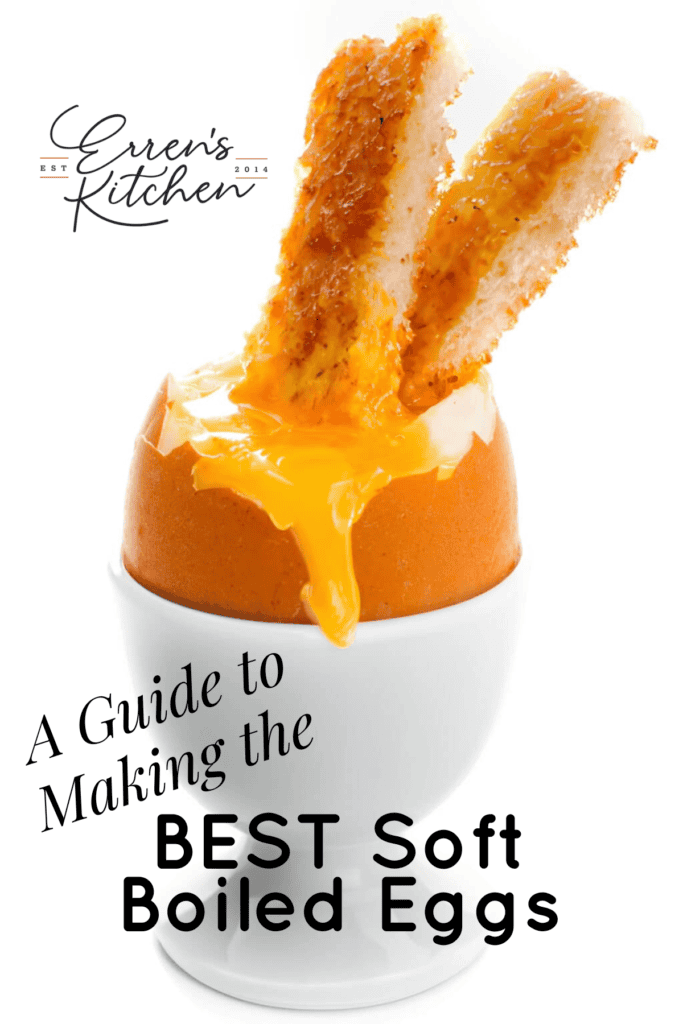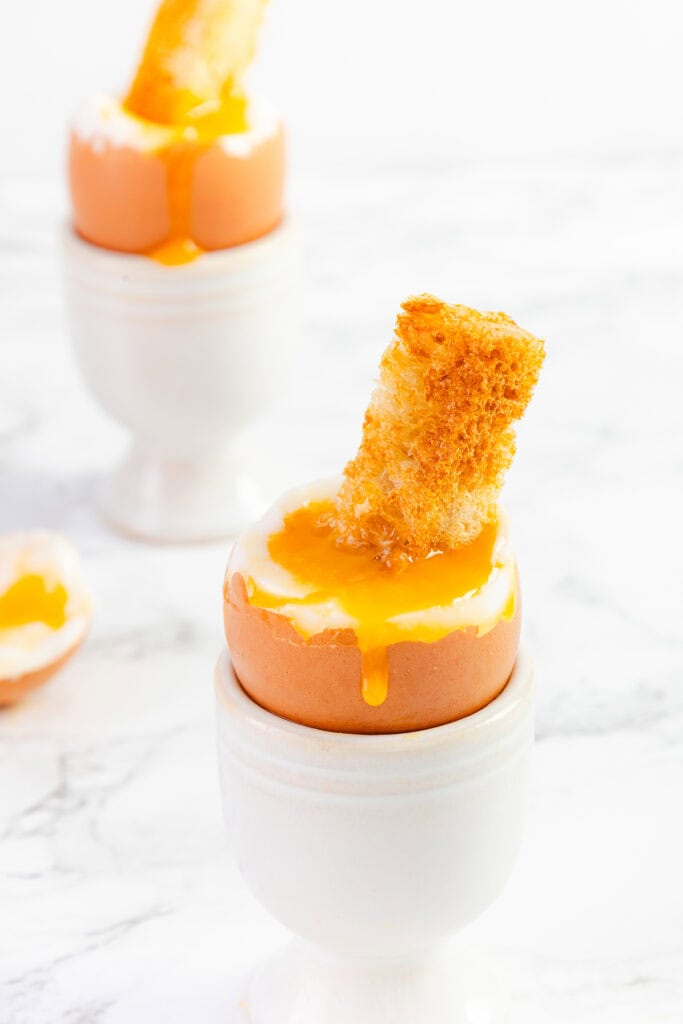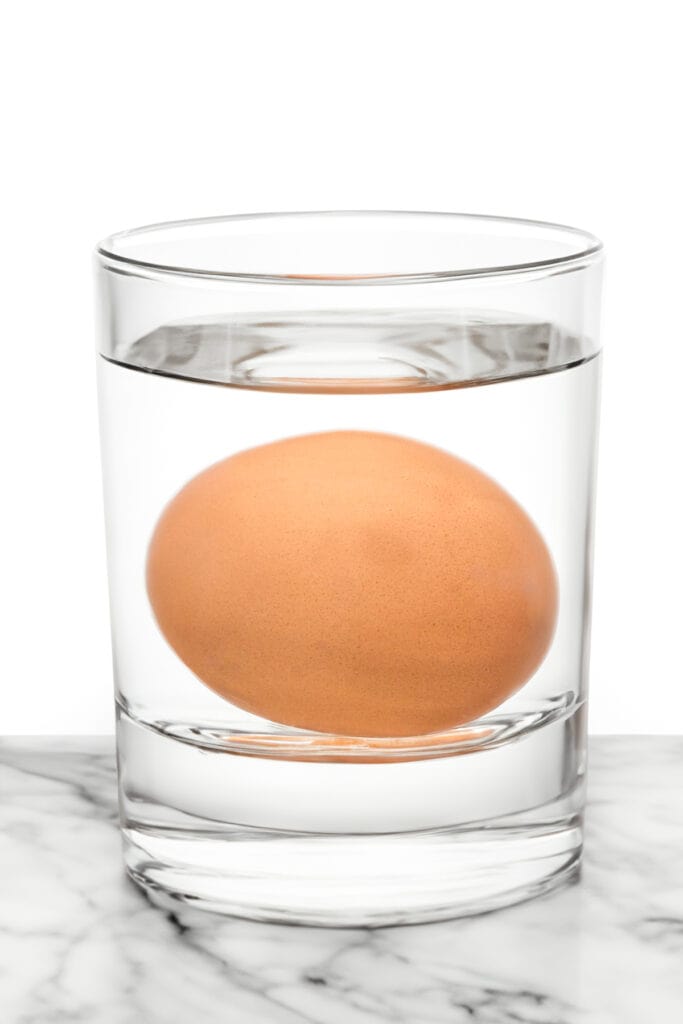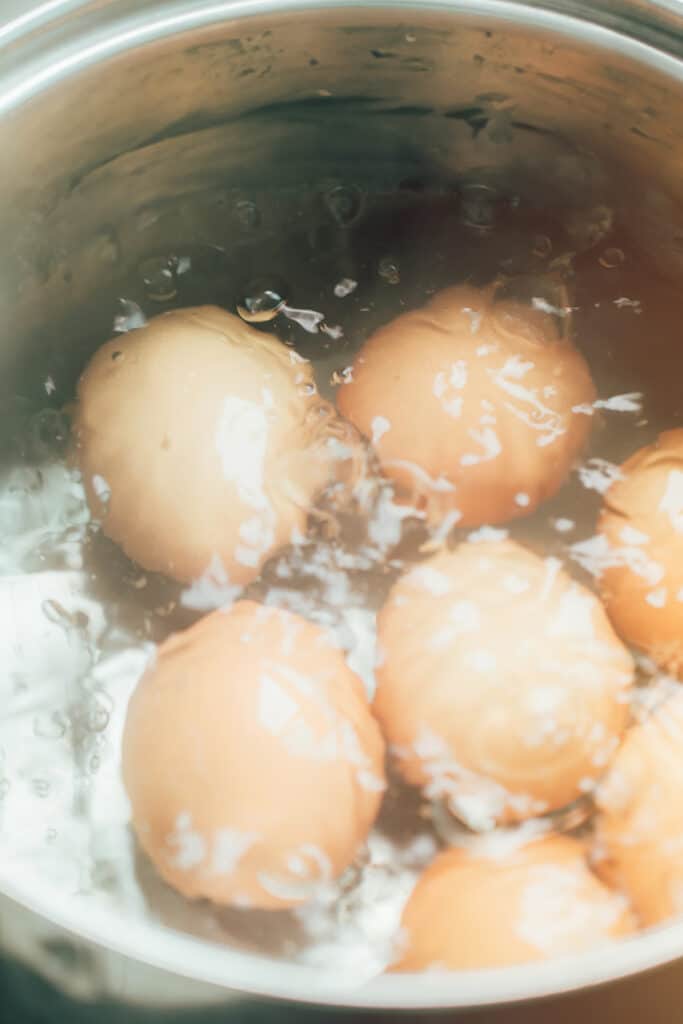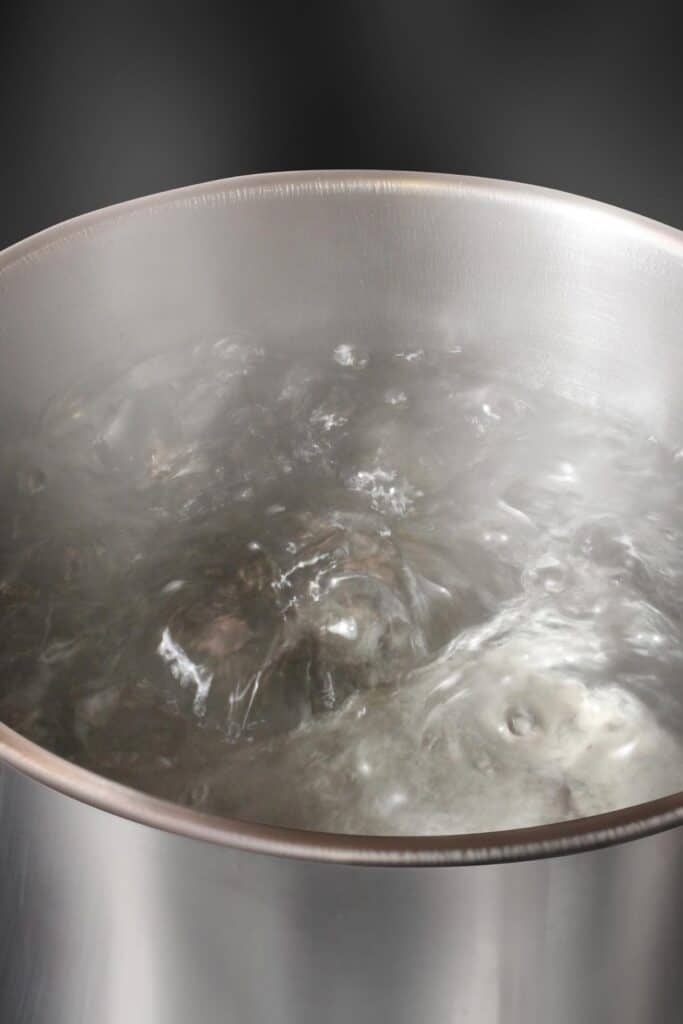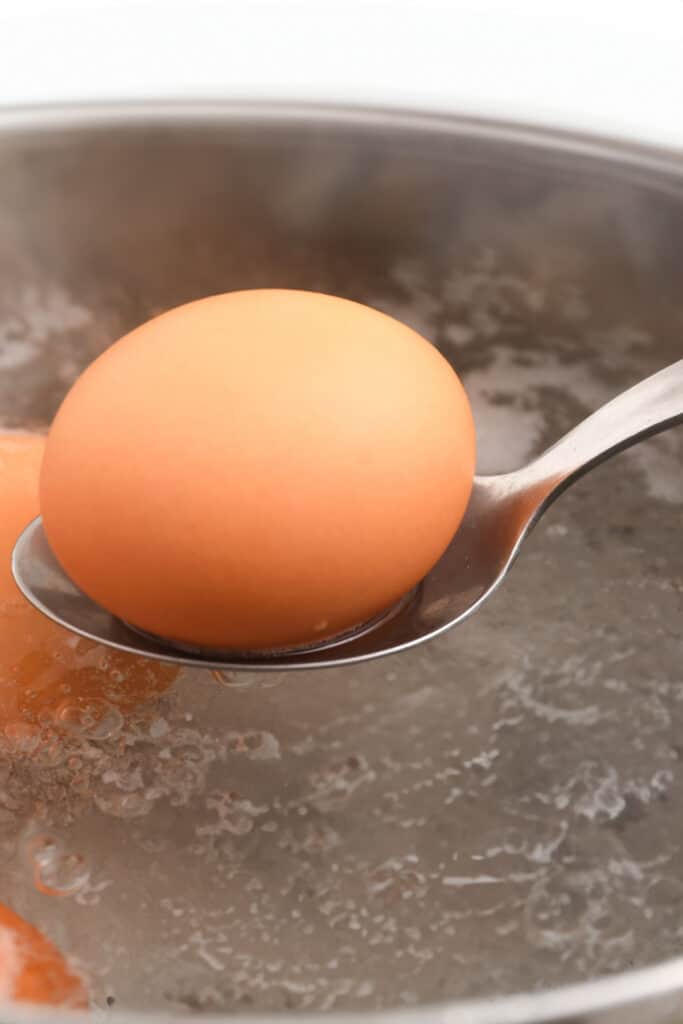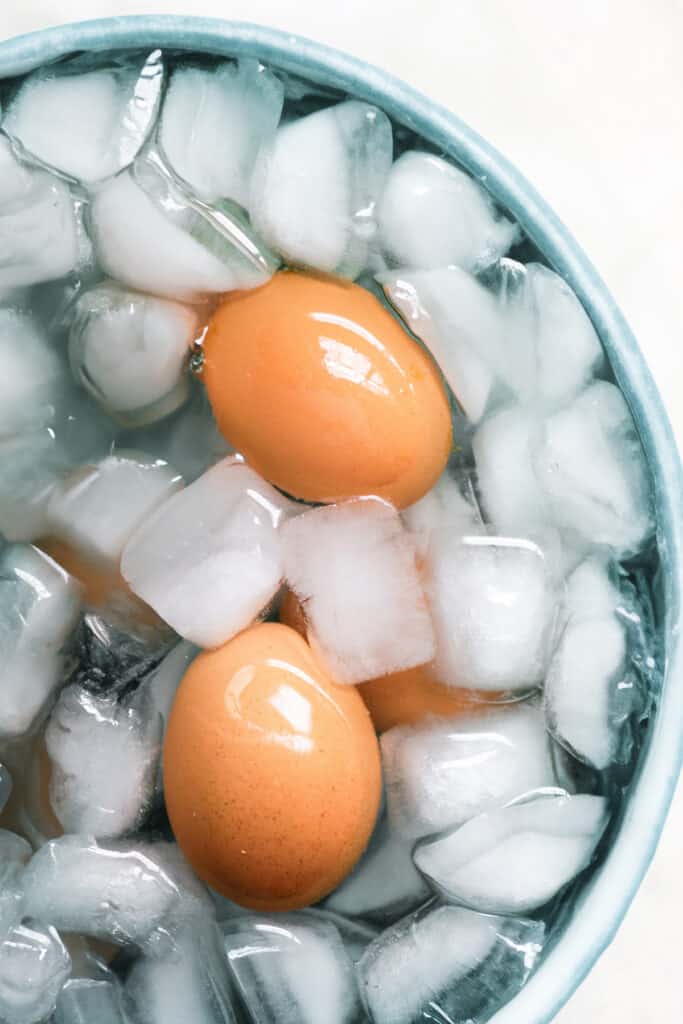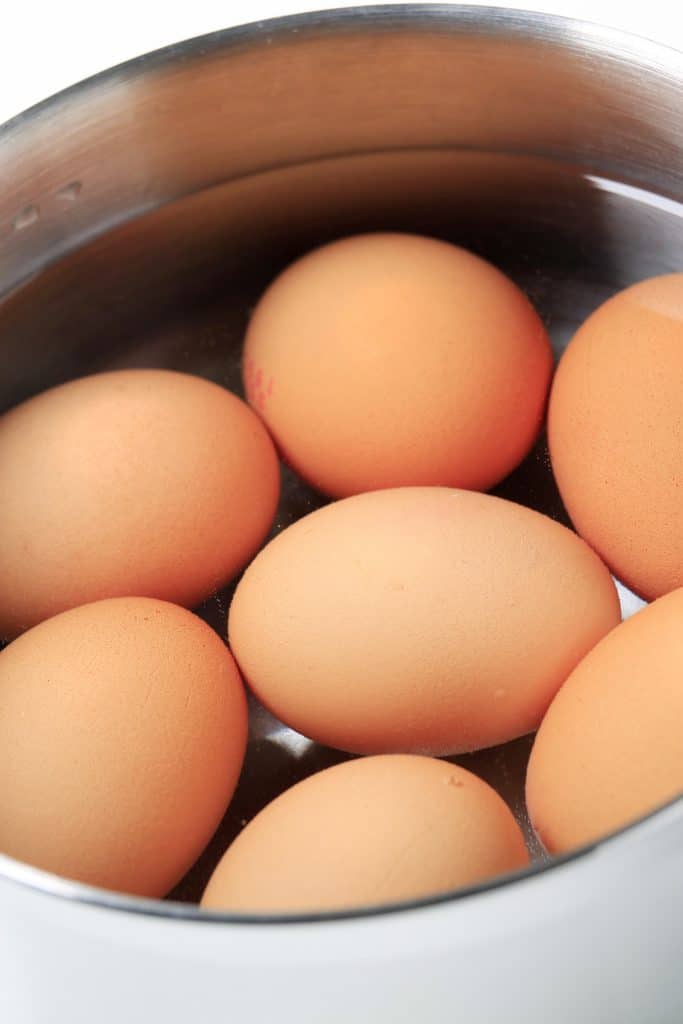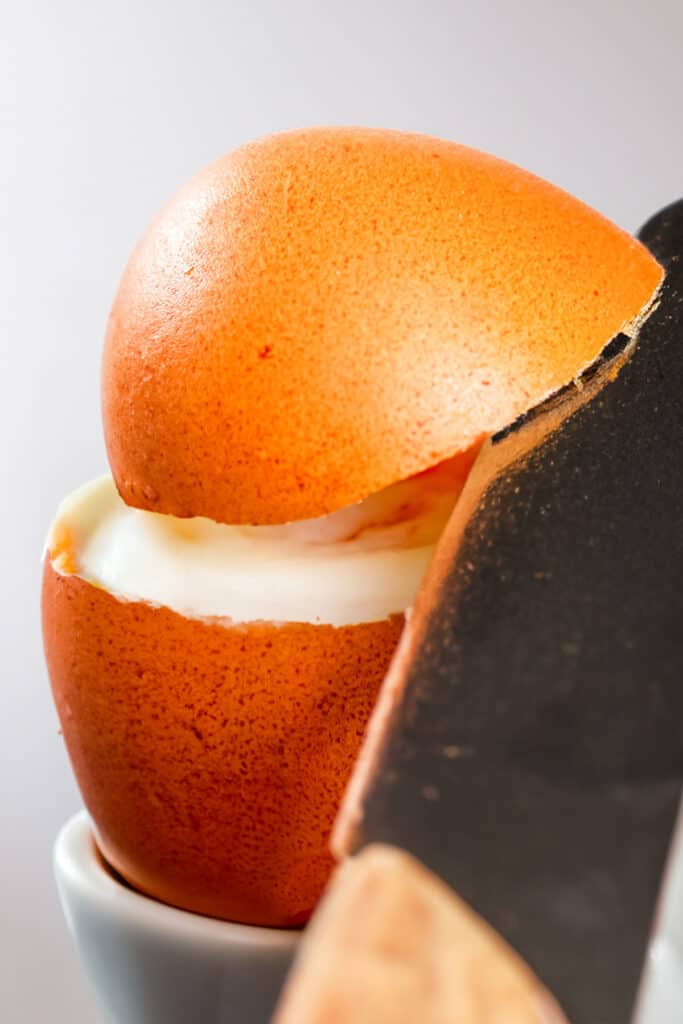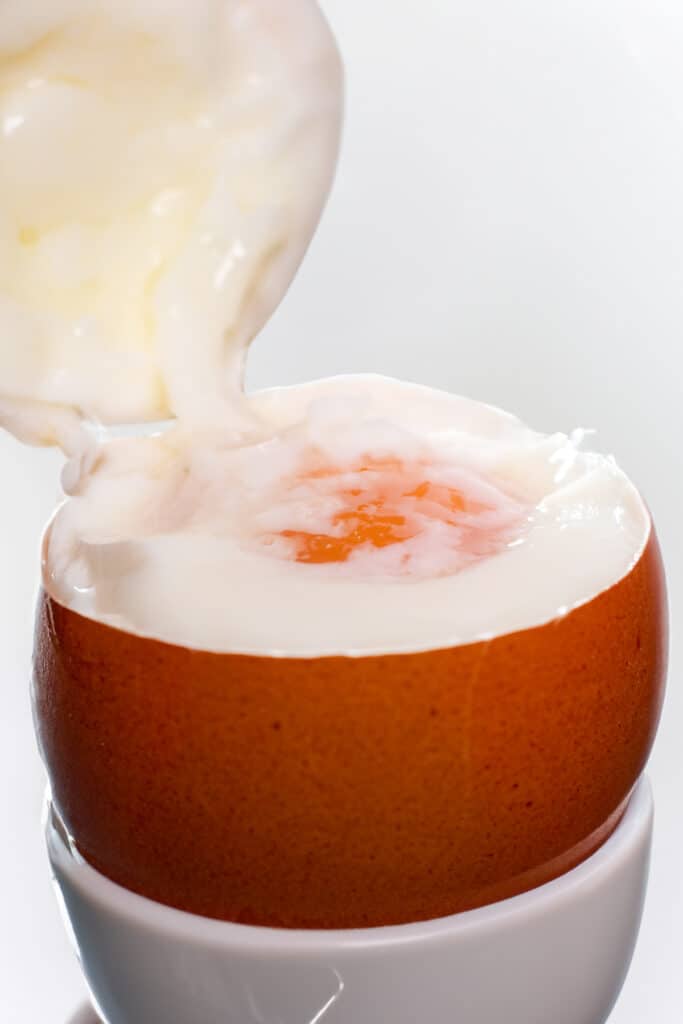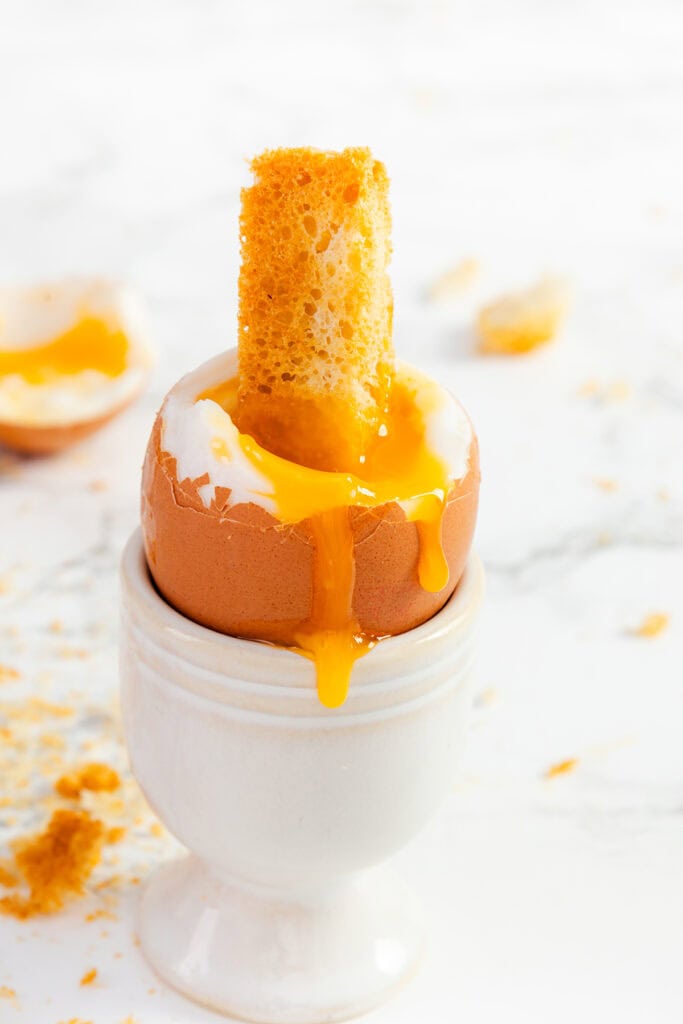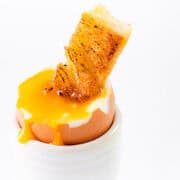Soft boiled eggs are one of my favorite breakfast items. There’s something about the gooey yolk that just makes me feel so content. Not to mention, they’re a great source of protein. I know it can be tricky to get them just right. But don’t worry, I’m here to help.
How Long Does It Take to Soft Boil an Egg?
The time it takes to boil an egg depends on your ideal consistency for the yolk and white and how you cook the eggs. If you start with the eggs covered in room temperature water, the cooking time will be different than if you add the eggs to water that is already boiling. Use the guide below for accurate cooking times. If it floats, it’s not as fresh as you might want. This doesn’t mean you can’t still use it, but the quality won’t be as good.
Should You Start with Boiling or Cold Water?
I like to start with cold water and cook my eggs for 4 minutes. This gives me a runny yolk that is perfect for dipping toast into. You can also start by adding your eggs to boiling water. The whites are less likely to overcook this way, but getting the yolk to the perfect consistency can be tricky. Read on for instructions on both methods.
Cooking In Boiling Water
Be sure to bring your eggs to room temperature for the best results. Fridge-cold eggs will take longer to cook and are more likely to crack. If your eggs are cold from the fridge, add 30 seconds to each time listed below. Fill a pot with enough water to cover the eggs and place it on the stove. Turn the heat up to high, and bring the water to come to a rolling boil. Use a spoon to slowly lower the eggs into the water in a single layer. To serve peeled, remove the eggs from the pot using a slotted spoon and place them in a bowl of ice water.
Four minutes: A loose white with a liquid yolk. Five minutes: A just-set, but not solid white with a runny yolk. Six minutes: A somewhat wobbly white with a deliciously loose yolk. Seven Minutes: An almost set white with a soft, jammy yolk.
Cooking From Cold Water
Be sure to bring your eggs to room temperature for the best results. Fridge-cold eggs will take longer to cook and are more likely to crack. If your eggs are cold from the fridge, add 30 seconds to each time listed below. Place the eggs in a single layer in a pan, then cover them with room-temperature water, which should come about a half inch/1cm above the eggs. Cover and bring to a full rolling boil. Reduce the heat to a simmer once the water has boiled, and use these cooking times for large eggs depending on how you like your yolk (see the image below for a visual guide): Two Minutes: A loose white with a liquid yolk.Three Minutes: A just-set, but not solid white with a runny yolk.Four Minutes: A somewhat wobbly white with a deliciously loose yolk.Five Minutes: An almost set white with a soft, jammy yolk.
How To Serve Soft Boiled Eggs
To serve peeled, remove the eggs from the pot using a slotted spoon, and place them in a bowl of ice water.
Allow to cool, peel and enjoy. They’re delicious, served on toast with guacamole, in soups, or just simply served with salt and pepper.
To serve in an egg cup, you can skip the ice bath. Just carefully cut the top of the egg with a knife.
Remove the top from the egg.
Serve in an egg cup and dunk strips of toast into the runny egg yolk.
Reheat them in a pot of hot water for a few minutes before eating. Alternatively, you can crack the eggs into a greased muffin pan, and bake at 350F/180C for 3-5 minutes until heated through. Erren’s Kitchen is written and produced for informational intentions only. We are not certified nutritionists, and the nutritional information found on this site has not been assessed or authorized by a nutritionist or the FDA. The nutritional information found in our recipes is offered as an estimate and should not be considered a guarantee or fact. The estimated data is provided as a courtesy and calculated through a third-party online nutritional calculator, spoonacular API. Although we do our best to provide accurate nutritional information, these figures should be considered rough estimates. Many factors, such as brands or products purchased and the nutritional fluctuations that naturally occur in fresh produce, can alter the effectiveness of the nutritional information in any recipe. Furthermore, various online calculators provide different results depending on their particular algorithms and nutrition fact sources. To obtain the most precise nutritional information in a provided recipe, you should calculate the nutritional information with the exact ingredients you are using when preparing the recipe using your preferred nutrition calculator.

